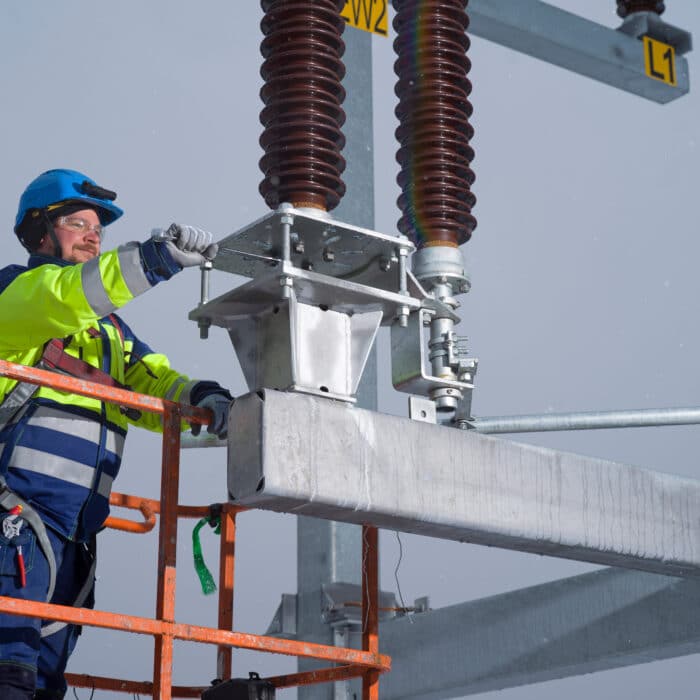Electricity market parties plan the balance between production and consumption in advance. At present, the power balance is maintained in one-hour periods. However, the rise of renewable energy is leading to a decrease in adjustable production, so one hour has become too long. The solution is to change to a 15-minute imbalance settlement period.
The 15-minute imbalance settlement period will be introduced in Finland on 22 May 2023. The eSett imbalance settlement system will transition to a 15-minute resolution on that date. Datahub, Finland’s centralised information exchange system, and high share of the energy metering will also begin operating with a 15-minute resolution.
The Nordic intraday market will move to 15-minute market time unit in 2024.
The day-ahead market will switch to a 15-minute market time unit in 2025, by which time EU countries should have implemented a 15-minute imbalance settlement period. The Nordic intraday market will move to 15-minute market time unit in 2024.
“Fingrid is promoting the 15-minute transition in close cooperation with stakeholders. The first transition phase will begin next spring, laying the foundation for subsequent progress towards the 15-minute model,” says Meri Viikari, Project Manager at Fingrid.
The 15-minute imbalance settlement period will improve the accuracy of forecasts and enable the power balance to be controlled more effectively. Consequently, market prices will drive the balance between production and consumption, and the system will be one step closer to becoming a real-time electricity market.
“It is important that the system is heading towards more accurate, market-driven imbalance settlement and market participants benefit from flexibility. During the transition phase, balance responsible parties will see their imbalances for each 15-minute period but will not incur costs for the 15-minute periods. This will allow them to improve procedures and be ready when 15-minute pricing is introduced,” Viikari says.
Going forward, eSett will calculate imbalances in 15-minute periods
eSett operates in Finland, Sweden, Norway and Denmark and is owned by the transmission system operators in these countries.
“Every hour, balance responsible parties accrue a surplus imbalance or a deficit imbalance, and we calculate the imbalance settlement on their behalf. Balance responsible parties are our customers, and we invoice them on behalf of the transmission system operators. The owners are also our customers, as we provide this service for them. Next spring, we will take a big step towards 15-minute markets,” says Tuomas Pulkkinen, an advisor at eSett.
He says that eSett will change its system in all four countries simultaneously, but in other regards, the pace of change will be set by the national legislation of each country.
“Finland and Denmark are at the forefront of the transition.”
Finland´s imbalance settlement will use a 15-minute resolution, but hourly data will still be available.
From May onwards, Finland’s imbalance settlement will use a 15-minute resolution, but hourly data will still be available.
“The phased transition will give customers time to adjust to the 15-minute resolution. They will have time to monitor how imbalances accrue. When we start invoicing for 15-minute imbalances, our customers will have a better understanding of how to adapt their trading patterns. The 15-minute imbalance settlement period is a more real-time approach – closer to the reality of the situation,” Pulkkinen continues.
Balance responsible parties consider the 15-minute imbalance settlement period fair
Kimmo Kuusinen is the CEO of Energia Myynti Suomi,which monitors the 15-minute imbalance settlement period from the perspective of electricity suppliers and balance responsible parties. Kuusinen is satisfied with the phased transition.
Energia Myynti Suomi is a company focusing on electricity sales. It belongs to Energi Danmark, a group of Nordic companies and one of the largest energy sector operators in the Nordic region. Energi Danmark counts large enterprises and organisations among its customers.
“The early stages of the transition to a 15-minute imbalance settlement period will not have a major impact on balance responsible parties because the price will initially remain the same for each hour. Germany has already made the switch to a 15-minute imbalance settlement period, and our group of companies also operates there. We already have some experience with this resolution,” Kuusinen states.
He notes that more changes will occur when market parties begin trading in 15-minute periods.
“We must now begin collecting 15-minute time series to develop our operations.”
“We need historical information and data to make forecasts and prepare ourselves for this. We must now begin collecting 15-minute time series to develop our operations. Nonetheless, we are ready for the change. We have developed our systems and automated our trading so that we can succeed in a hectic marketplace,” Kuusinen continues.
He says it is important to have a clear principle for determining prices.
“The concern is that the 15-minute balancing window will affect market liquidity. The price must be transparent and reflect the actual market. There may be a risk of problems caused by automated trading.”
Teija Pelkonen, the balance responsible party at UPM Energy, Finland’s second-largest electricity producer, says the transition will increase the need for process automation:
“UPM is active in the flexibility and regulation markets. We operate on the Nordic power exchange, and we also handle electricity purchases and sales for UPM’s companies. Our work will change dramatically when we receive four times as much data and the cycle is shorter,” she says.
The change will affect the entire system, and the degree of automation will inevitably increase.
“For UPM, digitalisation is the solution for electricity market development. We have already begun making the necessary changes to our systems.”
In Pelkonen’s view, the 15-minute imbalance settlement period will not make balance management more difficult, but the pace will increase.
“We began preparing in good time and we are ready for the 15-minute imbalance settlement period. We are also ready for the market. The essential aspects of price determination are transparency and the availability of actual market prices. It is also important for us that the Nordic market remains integrated.”




